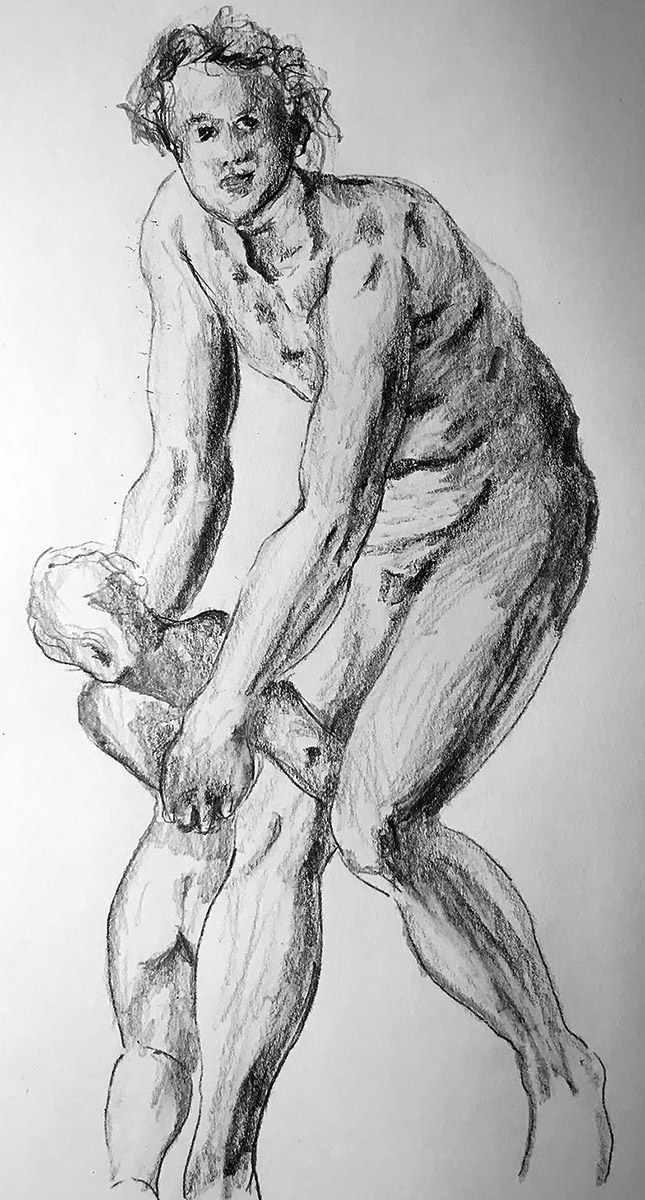
The image accompanying this post is a copy in graphite pencil of a drawing by Jacopo Pontormo. The original drawing is described as “A Young Man Holding a Small Child”. On the other side of the paper, there is another drawing of “A Young Man Holding a Small Child”. The sheet of paper that has those two drawings is in the Scottish National Gallery of Art. Pontormo was an Italian artist that worked in the Mannerist style which strayed from the realism Renaissance art. He elongated his figures to create more expressive compositions.
According to Giorgio Vasari’s Life of the Artists, Pontormo was a very withdrawn and neurotic individual. This idea of Pontormo has managed to exaggerate the popular conception of the artist, as seen in the film, Pontormo, a Heretical Love by Giovanni Fago. It is Fago’s portrayal of Pontormo that he is engrossed in a lonely, paranoid, and often protected process of his final Last Judgment project. When Vasari was writing his Lives of the Artists, he was in intense competition with the Pontormo/Bronzino workshop, according to art historian Elizabeth Pilliod. The professional feud between the two studio owners might have provided Vasari with enough motive to run down his opponent’s artistic lineage in his quest for patronage by the Medici family.
Except for Bronzino, few were able or willing to emulate Pontormo’s artistic peculiarities. In some of Bronzino’s early paintings, the authorship is still debated whether it belongs to him or to his instructor. In some ways, Pontormo shares the Mannerism of Rosso Fiorentino and Parmigianino. It could be said that he anticipated the Baroque as well as the style of El Greco. It was also a result of his idiosyncrasies that he had an original and cohesive sense of composition. Unfortunately, Pontormo’s work was quite out of fashion for several centuries. The fact that so much of his work has been lost or harshly damaged is a testament to this neglect. Fortunately, he has received renewed attention from contemporary art historians.
